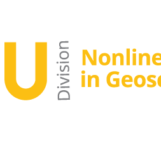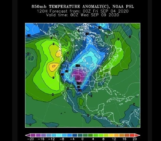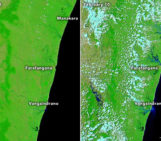
Today’s NP Interviews hosts the incoming NP Division President Davide Faranda.
Davide is Research Director in Climate Physics in the Laboratoire de Science du Climat et de l’Environnement (LSCE) of the Institute Pierre Simon Laplace at the French National Center for Scientific Research (CNRS). He is an expert of weather extreme events such as cold spells, heatwaves, cyclones and severe thunderstorms. His research activity focuses on the attribution of extreme events to climate change, that is understanding how much greenhouse gases influence the occurrence of extremes. At LSCE, he coordinates the group ESTIMR which works at understanding climate extremes from a statistical and dynamical point of view, an essential task in a changing climate! He is also external fellow of the London Mathematical Laboratory, and of the Laboratoire de Météorologie Dynamique de l’École Normale Supérieure in Paris.
- Davide, what are your main goals and priorities for the Nonlinear Process Division in the coming years? Are there any specific initiatives you plan to focus on?
My main goals for the Nonlinear Process Division in the coming years are centered around three key priorities. First, I want to foster greater inclusion of young researchers within our discussions and projects. This is essential for ensuring that new voices and innovative ideas are brought into the fold. By providing mentoring and dedicated sessions, we can facilitate opportunities for young scientists to engage with experienced researchers and contribute to the division’s growth. Second, I aim to emphasize diversity—not only in terms of gender and geography but also in scientific backgrounds. Nonlinear processes in the geosciences can benefit from a wider range of perspectives, and a more diverse scientific community will lead to a deeper understanding of these complex phenomena. Lastly, I plan to focus on the challenges and opportunities arising from artificial intelligence (AI) in the field of geosciences. AI holds immense potential for processing large data sets, but it also raises significant methodological and ethical concerns. I want to guide the division in exploring AI technologies responsibly, ensuring that we apply them rigorously and ethically to advance our research.
- Are there any new trends or developments in nonlinear processes that you think will shape the future of the division’s work?
I believe there are two key trends that will significantly influence the future work of the division. The first is the increasing recognition of the importance of interdisciplinary approaches. The methods we develop for nonlinear processes in geosciences have applications across various domains, such as geophysics and atmospheric sciences. Fostering interdisciplinary collaborations will allow us to develop more holistic models and insights, benefiting the broader geoscience community. The second trend I foresee is the growing influence of AI and machine learning. These tools are revolutionizing the way we analyze data and model complex systems. As we move forward, I expect to see more integration of these technologies, which will help us to gain new insights into nonlinear phenomena. However, alongside this, there is a need to develop clear frameworks for the responsible and transparent use of AI in our research.
- What inspired you to take on the role of President for the division? What is it about the division’s mission that resonates with you?
What inspired me to take on the role of President of the Nonlinear Process Division was the division’s central focus on understanding complex, dynamic systems—something that deeply resonates with my own research interests. Nonlinear processes are at the heart of many challenges we face, particularly in areas like climate science, where small changes can lead to large, unpredictable outcomes. I am excited about the opportunity to lead efforts that deepen our understanding of these processes and to contribute to making these insights more accessible to the broader scientific community. The mission of the division aligns perfectly with my belief in the value of collaboration. By bringing together researchers from various fields and fostering new ideas, the division offers an excellent platform to advance the understanding of nonlinear systems in geosciences.




